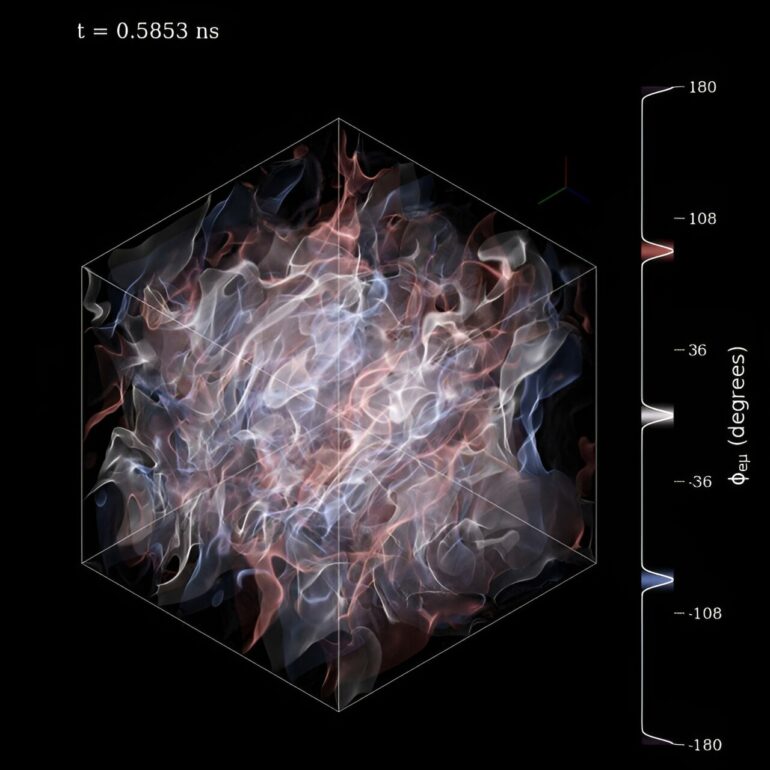Neutrinos have a quantum mechanical property called “flavor.” This flavor can transform as neutrinos move through space. A major challenge is to keep track of both the physical movement of the neutrinos and their change of flavor in astrophysical systems such as core-collapse supernovae and neutron star mergers. The complicated arrangement and large number of neutrinos in these systems make it nearly impossible to follow all or even a subset of the neutrinos.
Researchers examined a potential way to solve this challenge. The approach involves expanding traditional methods of calculating neutrino movement to include quantum mechanical flavor change. This approach reduces the complexity of calculating how neutrinos behave in complex systems
The research is published in the The Astrophysical Journal and the Physics Letters B journal.
A supernova or neutron star merger sends out many types of messengers, from photons to gravitational waves, from neutrinos to heavy elements. These messengers provide scientists with new insights into the physics of these stellar objects. However, scientists need to understand neutrino physics to use these messengers. Neutrinos carry a substantial proportion of the energy of these systems.
In addition, scientists need to understand the interactions that involve neutrinos to predict the heavy elements produced from the explosions of stars and star mergers. Angular moments encapsulate the total number and flux of the neutrinos into a small set of equations of motion.
Scientists can then use these equations to calculate the change in neutrino flavor. The reduced number of equations in the angular moment method offers a path forward for solving neutrino flavor-transformation problems in compact astrophysical objects, such as a neutron star merger.
This research examined the prospects for using a semi-classical angular-moment-based approach to include the quantum mechanical effects of flavor in the transport of neutrinos in a neutron star merger remnant. The researchers tested the method on a type of neutrino flavor transformation called “fast-flavor,” for which angular information about the neutrinos is a known requirement for the transformation. The result was that the method captured the growth of the transformation well and that this method warrants further exploration.
More information:
Evan Grohs et al, Two-moment Neutrino Flavor Transformation with Applications to the Fast Flavor Instability in Neutron Star Mergers, The Astrophysical Journal (2024). DOI: 10.3847/1538-4357/ad13f2
Evan Grohs et al, Neutrino fast flavor instability in three dimensions for a neutron star merger, Physics Letters B (2023). DOI: 10.1016/j.physletb.2023.138210
Provided by
US Department of Energy
Citation:
What flavor is that neutrino? Adding flavor helps to track neutrino movement in astrophysical systems (2024, July 12)



